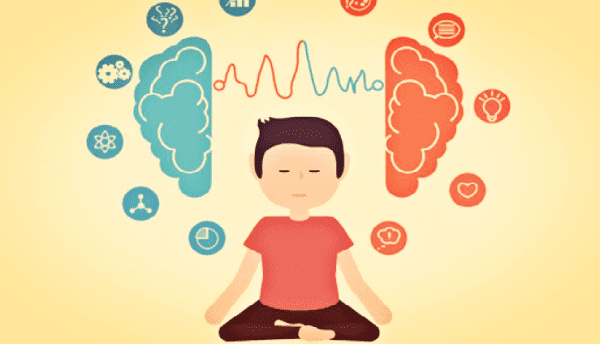Mindfulness is a mental state of awareness and acceptance, which can be cultivated through various techniques. Mindfulness is a powerful practice that can bring many benefits to our everyday lives, such as reducing stress, enhancing focus, and improving overall well-being. This article will explore the various techniques for cultivating mindfulness and how to integrate them into our everyday lives.
Understanding mindfulness
Mindfulness has its roots in ancient Buddhist traditions, but its principles have been adapted and applied in many different contexts in the modern world. At its core, mindfulness is about being fully present in the moment, without judgment or distraction. Mindfulness involves paying attention to our thoughts, feelings, and physical sensations as they arise, rather than trying to suppress or control them.
The difference between mindfulness and meditation is that meditation is a specific practice that involves sitting quietly and focusing on the breath or other focal point, while mindfulness can be practiced in any activity throughout the day.
Mindfulness techniques
There are many different techniques for practicing mindfulness. Here are some of the most effective:
Breathing exercises
Breathing exercises are a simple and effective way to cultivate mindfulness. Simply take a few deep breaths and focus your attention on the sensation of the breath moving in and out of your body. You can do this exercise anywhere, at any time.
Body scanning
Body scanning involves focusing your attention on different parts of your body, starting from your toes and working your way up to the top of your head. As you scan each part of your body, notice any sensations you feel, such as tension or relaxation.
Mindful walking
Mindful walking involves paying attention to the physical sensations of walking, such as the feeling of your feet touching the ground, the movement of your body, and the sounds around you. It can be done indoors or outdoors, and it’s a great way to incorporate mindfulness into your daily exercise routine.
Eating mindfully
Eating mindfully involves paying attention to the taste, texture, and sensations of the food you’re eating. It’s about savoring each bite and noticing the experience of eating without distractions.
Mindful communication
Mindful communication involves being fully present and attentive during conversations with others. It involves listening without judgment, being aware of your own reactions and emotions, and responding thoughtfully and empathetically.
Integrating mindfulness in everyday life
Practicing mindfulness doesn’t have to be a separate activity from your daily routine. Here are some ways to incorporate mindfulness into your everyday life:
Creating a daily mindfulness routine
Schedule a specific time each day for mindfulness practice. This could be a few minutes in the morning or before bed, or it could be during your lunch break at work.
Incorporating mindfulness into your workday
Take short breaks throughout the day to practice mindfulness exercises such as breathing, body scanning, or mindful walking. This can help reduce stress and increase productivity.
Mindful parenting
Mindful parenting involves being fully present and attentive to your child’s needs, feelings, and experiences. It involves listening without judgment, being aware of your own emotions and reactions, and responding thoughtfully and empathetically.
Mindful relationships
Mindful relationships involve being fully present and attentive to your partner’s needs, feelings, and experiences. It involves communicating openly and honestly, listening without judgment, and responding thoughtfully and empathetically.
The challenges of practicing mindfulness
While mindfulness can bring many benefits to our lives, it’s not always easy to practice. Here are some of the challenges you may encounter and how to overcome them:
Overcoming distractions and obstacles
In our fast-paced world, it’s easy to get distracted by technology, social media, and other distractions. To overcome this, try setting aside specific times each day for mindfulness practice, and minimize distractions during these times.
Overcoming negative self-talk
Negative self-talk can be a major obstacle to mindfulness practice. To overcome this, try to become aware of your negative thoughts and replace them with positive, affirming ones.
Dealing with boredom and restlessness
Mindfulness practice can sometimes be boring or uncomfortable, especially when you’re just starting out. To overcome this, try to stay focused on the present moment and the sensations you’re experiencing, and remind yourself of the benefits of mindfulness practice.
Coping with difficult emotions
Mindfulness practice can sometimes bring up difficult emotions such as fear, anger, or sadness. To cope with these emotions, try to observe them without judgment or resistance, and remind yourself that all emotions are temporary and will eventually pass.
FAQs
Can mindfulness help with anxiety and depression?
Yes, mindfulness has been shown to be an effective tool for managing anxiety and depression by reducing stress and increasing awareness of thoughts and emotions.
How long does it take to see the benefits of mindfulness practice?
The benefits of mindfulness practice can be seen in as little as a few minutes a day, but it typically takes several weeks or months of regular practice to see significant changes.
Is mindfulness a religious practice?
While mindfulness has its roots in Buddhist traditions, it is not inherently a religious practice and can be practiced by anyone regardless of their religious beliefs.
Can mindfulness be practiced while doing other activities, like exercising or cooking?
Yes, mindfulness can be practiced in any activity throughout the day, such as exercise, cooking, or cleaning.
Is it necessary to meditate to practice mindfulness?
No, while meditation is a specific practice that can help cultivate mindfulness, it’s not necessary to meditate to practice mindfulness. Mindfulness can be practiced in any activity throughout the day.
Conclusion
In conclusion, cultivating mindfulness can bring many benefits to our everyday lives, such as reducing stress, enhancing focus, and improving overall well-being. By practicing mindfulness techniques and integrating them into our daily routines, we can develop a greater sense of presence and awareness in all areas of our lives.
Remember, mindfulness is a practice, and like any other practice, it takes time and effort to develop. But with patience and persistence, anyone can cultivate the power of presence in their everyday lives.

